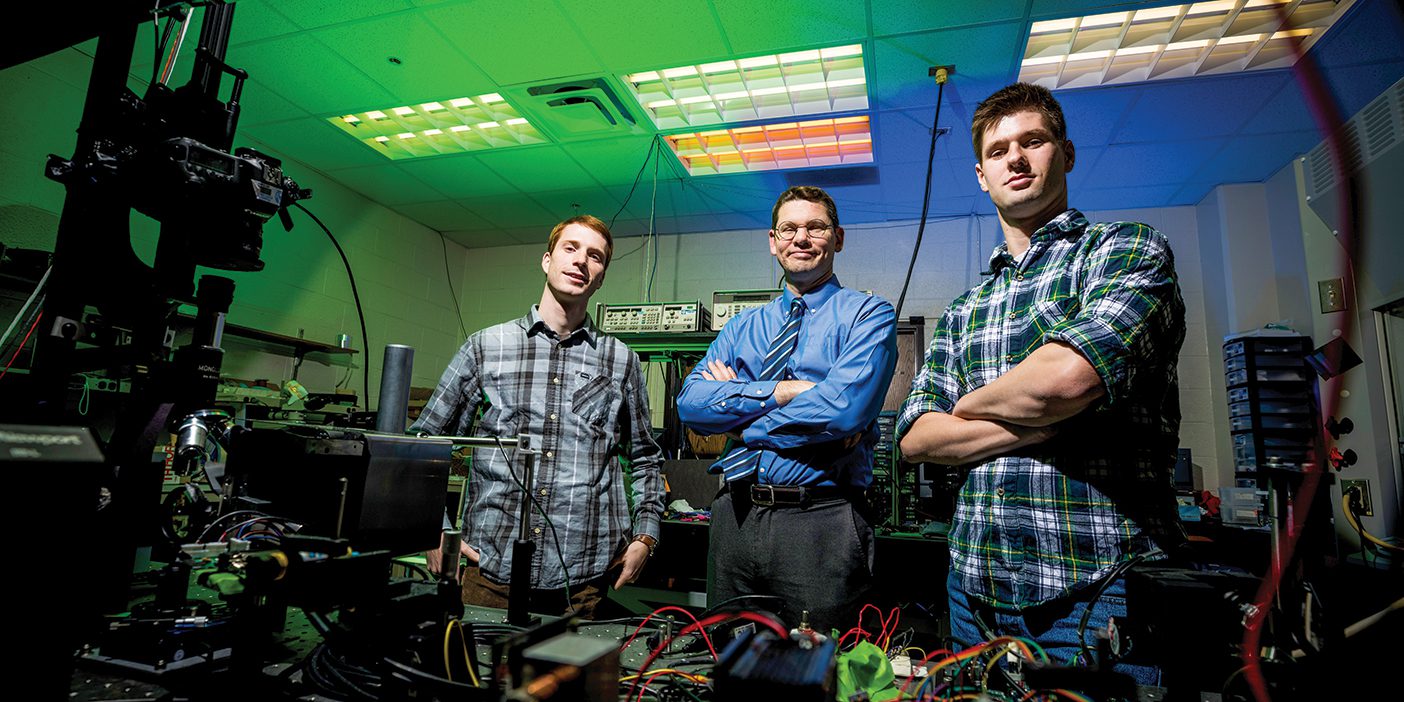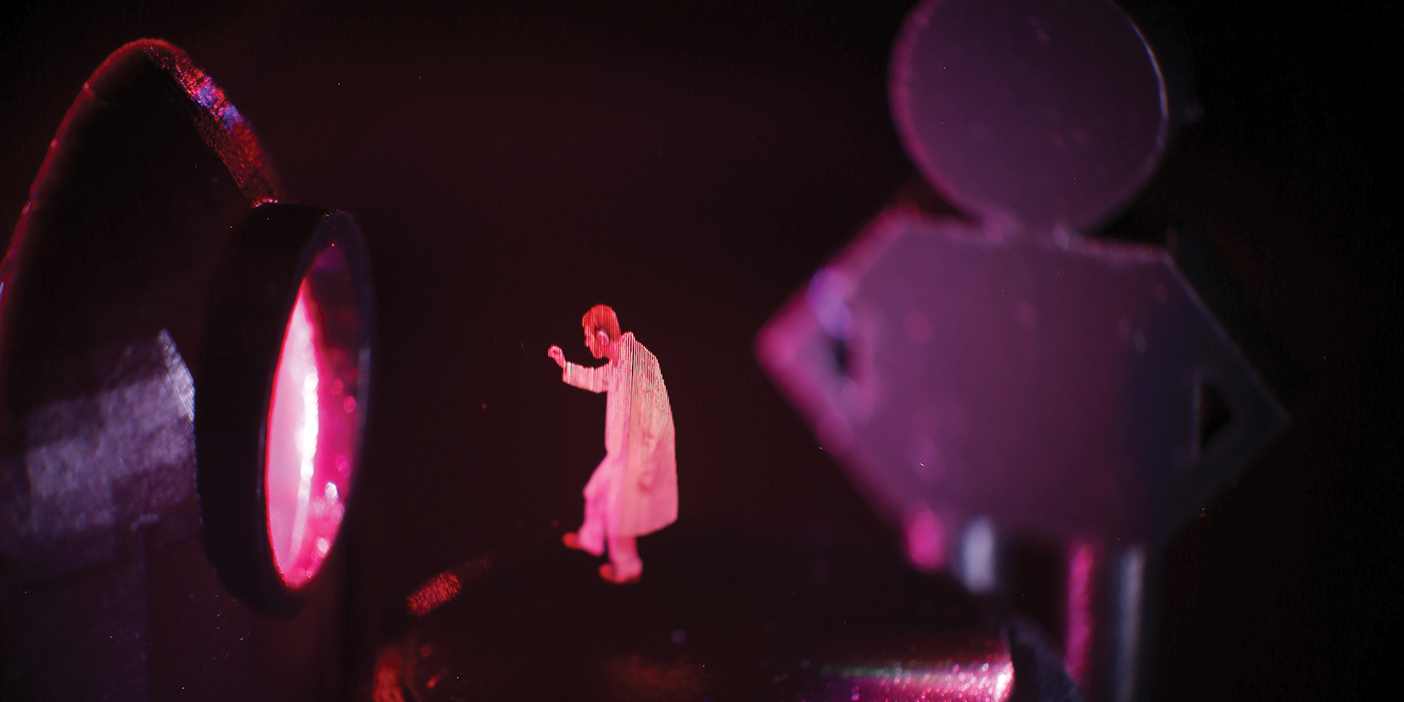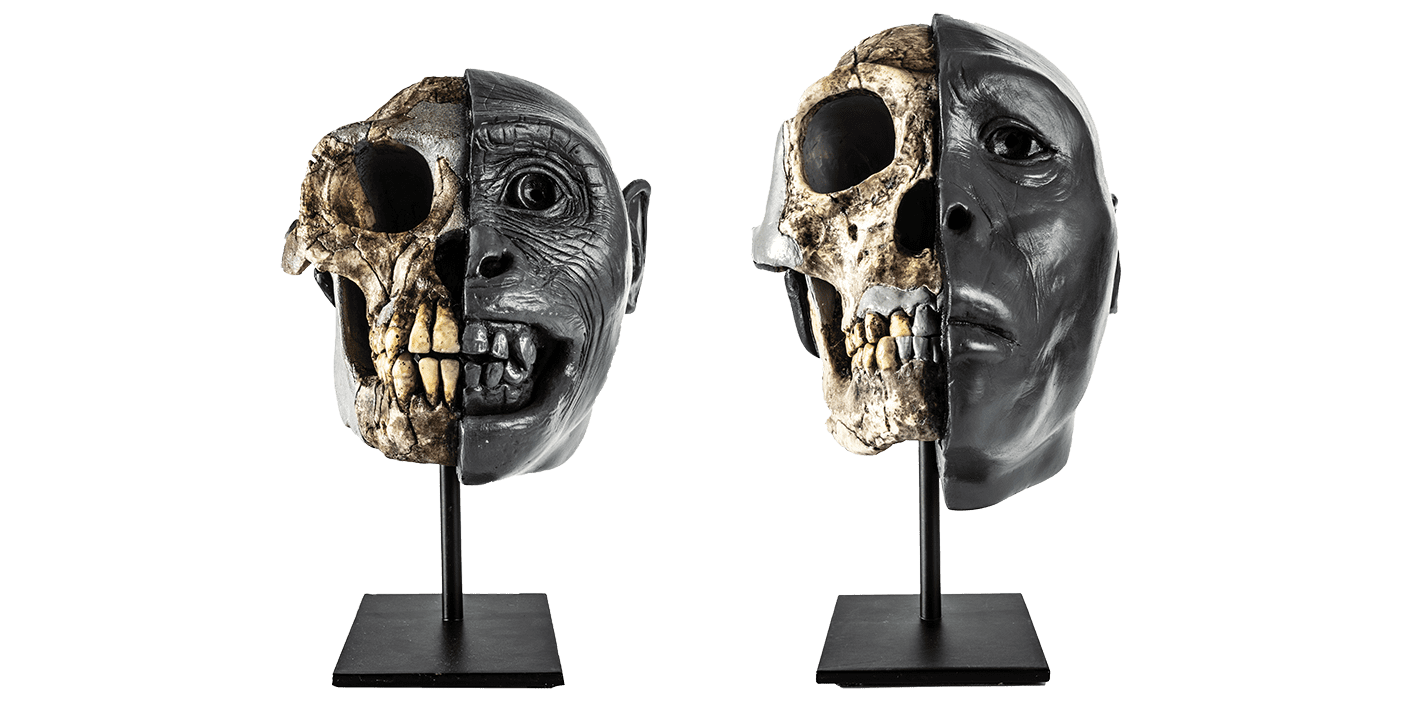Stars Wars fans, rejoice! Inspired by holographic Princess Leia’s iconic plea for help, BYU engineers have brought sci-fi images to life —including light-saber battles and, for the Trekkies, laser fire between the starship Enterprise and a Klingon battle cruiser.
While movie holograms are created by computers in postproduction, these displays, developed by electrical-engineering professor Daniel E. Smalley and the BYU holography research group, exist in the real world. Unlike 2D holograms, Smalley’s images—called volumetric displays—are physical, 3D images created by trapping a small particle with lasers and moving it back and forth quickly to create glowing lines that float in the air.

Most volumetric displays are limited to the size of the small display case, so Smalley and his team use motion parallax—changing the images as the viewer moves around the scene—to give the illusion that the images exist outside the display.
“The future won’t be the future without a Princess Leia projector,” says Smalley, “and [this volumetric display] can make that a reality.”













